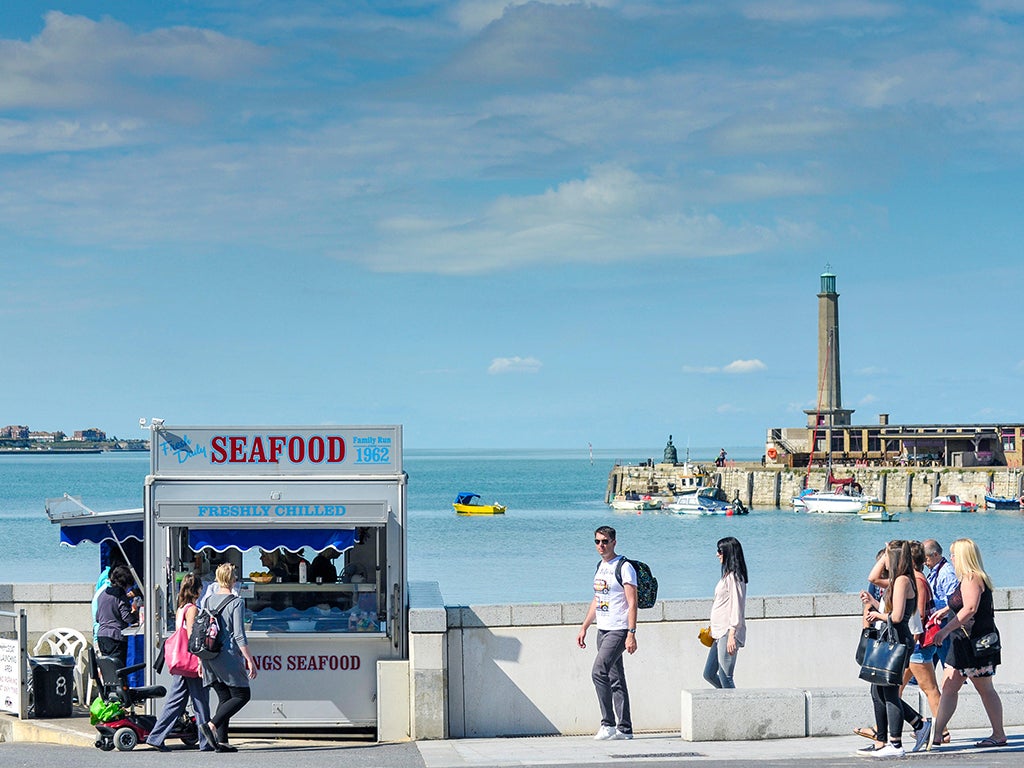
The British seaside – the land of the cheap and cheerful. Penny arcades, reasonably priced cod [citation needed] and stag-dos. These towns host a disproportionate number of over-55s, the vast majority of residents own their homes and fewer than average hold degree-level qualifications or above.
Until 2010 this “Sea Wall” of towns along the English and Welsh coasts were battlegrounds for the main political parties. With the exception of the Lib Dem stronghold of the West Country, they were predominantly fought between the Tories and Labour. But in 2016 the vast majority voted to leave the EU and since 2010 they have mostly backed the Conservatives with increasing vigour.
In common with the rest of the country, however, the Sea Wall is seeing a substantial swing away from the Tories (albeit not as great as the national swing). A new YouGov poll, commissioned by the Fabian Society and shared exclusively with the New Statesman, proves just that.
In 2019 51 per cent of those living in the Sea Wall voted Conservative and just 29 per cent backed Labour. The YouGov poll, however, puts Labour ahead on 38 per cent to the Tories’ 32 per cent.
If we compare that with 2005 – the earliest we are able to calculate how today’s seats would have voted – this would represent the worst result for the Conservatives in decades. Their vote share of 32 per cent is below the 36 per cent they achieved under Michael Howard 17 years ago.
If we were to apply uniform swing to these figures, the vast majority of the seats would change hands. The Lib Dems would mount comebacks in the south-west, while Labour would make gains all over, even in seats that have never voted Labour before. (Caveats about the unreliability of uniform swing apply, naturally.)
But there is cause for Labour to be cautious. While Keir Starmer’s party leads nationally by as much as 15 to 25 percentage points, in the Sea Wall it leads by as little as six. Its 38 per cent share is within the margin of error of its 2017 performance. The data tables show that voter uncertainty is higher in coastal seats than it is nationally.
[See also: Voters want radical constitutional change, polling shows]
The Tories’ 2019 vote was comprised of 2010-15 Cameronites as well as former Lib Dems and Ukippers. Those who backed Ukip in 2015, Leave in 2016 and Boris Johnon’s Tories in 2019 are more likely than other groups to tell pollsters they would stay at home at the next election. Such voters are helping to drive the Tories' support downwards, both in the Red Wall and seaside towns.
At the same time, however, there is scepticism from coastal voters about Labour. While nationally the largest share of voters believe the party is in touch, the party is in negative territory among coastal constituencies: 39 per cent of those living in coastal towns believe Labour doesn’t understand them, and just 35 per cent do.
The Conservatives, meanwhile, are far and away at rock bottom for public perceptions. Among voters nationally they have a net negative of -37; among coastal voters they stand at -32.
Findings such as these dramatise two points. The first is that the Tory brand is poor both nationally and in seats they were once comfortably winning. Labour has very much breached the Sea Wall – “often overlooked, but a key part of Labour’s election-winning coalition” in the words of the Fabian Society’s Ben Cooper. But the party’s brand, which has improved a lot in recent years, is still precarious among certain voter groups. Labour’s rise is still more a consequence of Tory failure than Labour success.
[See also: Where does Britain stand on strikes? It’s complicated]


